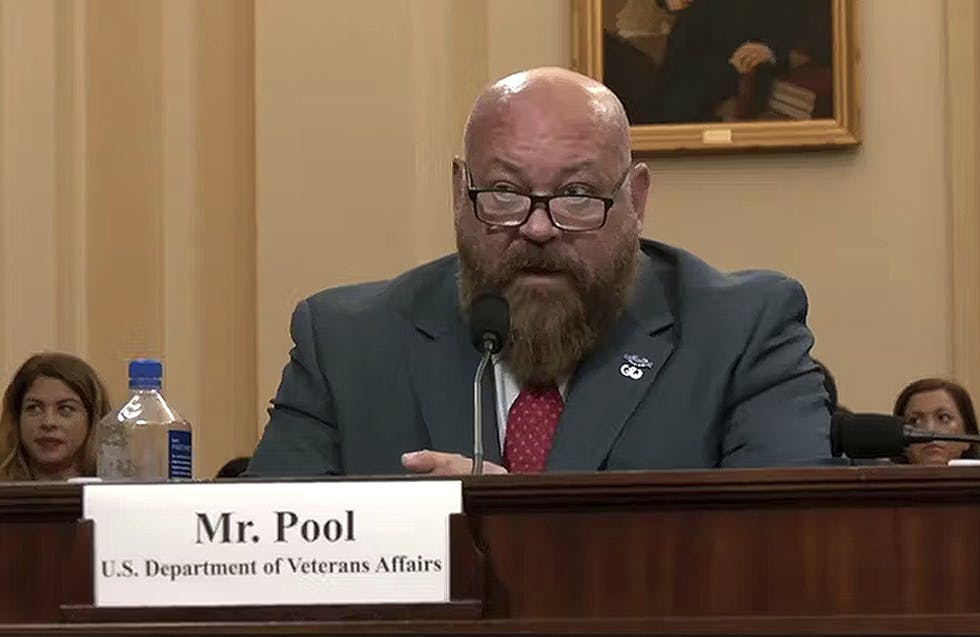DISA Leader Talks Cloud Integration at DOD
As the Defense Department considers options for cloud implementation, the agency’s next-generation cloud program manager talks benefits of milCloud 2.0.

Amid widespread federal cloud migration efforts, the Defense Information Systems Agency seeks to improve the Defense Department’s cloud footprint.
Milcloud 2.0 is an on-premises (on-prem) commercial cloud, which DOD calls a fit-for-purpose or a purpose-built cloud, according to Caroline Bean, DISA’s infrastructure branch chief and milCloud 2.0 program manager. The fit-for-purpose model of milCloud 2.0 differs from DOD’s $10 billion Joint Enterprise Defense Infrastructure (JEDI) ongoing contract for a general-purpose, commercially operated cloud. Enterprise cloud migration efforts like this often run into the question of which cloud path to take early on in the process.
“Essentially, you get the benefits of being within the DOD,” Bean said at GDIT’s Emerge 2019 event Tuesday. Having milCloud 2.0 on-prem benefits mission partners and authorizing officials for whom security is a major concern and for whom jumping straight into the off-premises (off-prem) commercial cloud environment is too big of a leap at his time, according to Bean.
“That doesn’t mean that there isn’t a need for commercial cloud. There definitely is, but this brings the commercial cloud in house,” Bean said.
In addition to its enhanced security compared to the commercial cloud, milCloud 2.0 also represents a lower-cost model than legacy data centers. In that sense, it balances security and cost on the continuum from on-prem legacy data centers and servers to off-prem commercial cloud environments.
MilCloud 2.0 even has a cost calculator for estimating cloud costs with user-designated inputs for CPU, memory, storage and other offerings to simplify the onboarding process.
Like all enterprise IT modernization efforts, the migration to milCloud 2.0 comes with a set of challenges.
“What are some of the challenges that we’re seeing when we’re talking about cloud and migrating to the cloud environment?” Bean asked. The answers are typical of this type of effort: cost, buy-in, training, disparate data and critical application rationalization.
“Within DISA, we have been actually migrating our own applications, our own DISA applications, into milCloud 2.0, and so we’ve started gathering some lessons based on what we have been seeing and some of the challenges that we’re actually hitting up against,” Bean said.
Those lessons learned will help DISA guide other Fourth Estate agencies (which, in addition to DISA, comprises DOD’s headquarters, agencies, and activities that do not fall under the military departments) through the milCloud 2.0 migration process. For industry partners looking to be involved, assisting with milCloud 2.0 migration efforts is a good starting point, according to Bean. For mission partners, Bean advised aligning contract scopes more closely to future plans for cloud-hosting environments, dedicating resources to cloud migration efforts and training on different types of cloud and their advantages and disadvantages to determine the best cloud strategy moving forward.
DISA has established small dedicated teams to help Fourth Estate mission partners during the migration process.
“Every Fourth Estate agency has a project lead and an engineer assigned to them to assist them in trying to figure out what is actually in their legacy … environment,” Bean said. “The biggest thing with doing that is starting small and winning early … What that essentially means is: go after the low-hanging fruit,” Bean added.
Bean also highlighted the importance of both automation and application rationalization during the cloud migration process. Being able to analyze applications for their suitability and effectiveness in the cloud is crucial to cutting costs.
“Cloud may not necessarily equal cheaper,” Bean said. If mission partners don’t rationalize their applications with an eye for streamlining necessary applications and eliminating unnecessary ones, the cloud won’t be cheaper, according to Bean.
Bean emphasized DOD’s commitment to moving legacy applications from legacy data centers into a more standardized cloud environment despite challenges of disparate data and applications. In fact, in May 2018, DOD’s Office of the Chief Information Officer mandated that Fourth Estate agencies move into milCloud 2.0 by December 2020.
Bean also referenced the December 2018 DOD cloud strategy. “Essentially, the cloud is the foundation of where we are going,” Bean said. That foundation will allow DOD to exploit technologies like artificial intelligence and machine learning. “It’s super important to try to get that foundation, to try to get some of the department to start moving toward a more cloud-enabled application,” Bean said.
This is a carousel with manually rotating slides. Use Next and Previous buttons to navigate or jump to a slide with the slide dots
-

Trump AI Orders Call for Speed in Building Infrastructure
The directives call for expanding AI infrastructure, streamlining federal permitting and promoting AI exports.
4m read -

DOD Accelerates Software Modernization with Agile DevSecOps Push
The Pentagon's software implementation plan tackles cultural hurdles and integrates security early to deliver critical capabilities faster.
6m read -

White House Unveils AI Action Plan to Secure Global Dominance
The strategy outlines steps to accelerate private sector innovation, build critical infrastructure and advance U.S. leadership in AI policy and security.
3m read -

VA's Platform One Powers Rapid Innovation to Bolster Digital Services
VA's Platform One accelerates software development timelines from weeks to hours, ultimately enhancing digital services for veterans.
5m read -

Federal Leaders Receive Federal IT Efficiency Flywheel Awards from GovCIO Media & Research
Five federal IT leaders received Flywheel Awards for driving innovation and modernizing technology at the Federal IT Efficiency Summit.
5m read -

Doing More with Less is Muscle Memory for IRS, Former Deputy CIO Says
Darnita Trower discusses her experience, the legacy she’s left behind and how she pushed the IRS to modernize itself,
20m watch -

Opinion: Original Intelligence Is the Missing Piece for AI Transformation
Limitations of AI agents and development drive growing needs for workforce development and "original intelligence."
3m read -

VA CIO Targets Modern IT and Smarter Workforce Alignment
Agency leaders told lawmakers they are focused on trimming legacy systems and restructuring its workforce to streamline operations.
3m read -

Pentagon's $200M AI Contracts Signal Broader Effort to Transform Talent
The Army is leveraging Silicon Valley, reservist programs and new hiring strategies to integrate critical digital skills in its ranks.
5m read -

AI Foundations Driving Government Efficiency
Federal agencies are modernizing systems, managing risk and building trust to scale responsible AI and drive government efficiency.
43m watch -

Inside DOD’s Push to Grow the Cyber Workforce Through Academia
Diba Hadi gives her first interview since becoming principal director of the DOD’s Cyber Academic Engagement Office.
15m listen -

Agencies Tackle Infrastructure Challenges to Drive AI Adoption
Federal agencies are rethinking data strategies and IT modernization to drive mission impact and operational efficiency as new presidential directives guide next steps.
5m read Partner Content
















